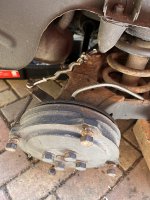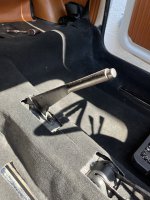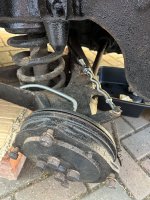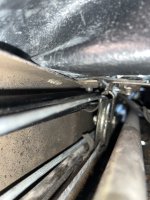When I say "manually adjust brakes" I include winding up automatic adjusters. !!! (no such thing as can't

)
This may sound strange, but I assure you even on perfect auto adjusters it can sometimes improve the pedal.
You will need to know exactly how the automatic adjusters work on your model of car!
This must be done with care not to over do it, so what ever form of adjuster if correctly clicked on a little, then check the drum will go on easily, apply foot and handbrake several times, check for even slight binding and release if necessary, repeat this operation with care until you reach the optimum.
This MUST be done with common sense, a little at a time, if you over do it and force the drum on you will be in lots of trouble trying to release it.
With patience and practice, one click then put drum on and check and repeat etc.
If you follow that rule and find you have caused it to bind you will still be able to gentle tap the drum using a copper hammer and wriggle it off.Then you must back off the adjuster and recheck.
When you finish and all brake drums will still revolve freely, then give a good road test for a few miles using the foot and handbrake several times, then run your hands over the wheels to check for any running hotter, if so jack up car and correct it!
N.B. if your car has worn brake drums with a wear ridge it is best not to do this as you may run into problems.
If you don't feel 100% competent to do what I have said, then do not do it!
I have done this since 1969 in the motortrade, so as a fully qualified motor engineer I have that, over fifty years of experience behind me.
In an ideal World this operation should not be necessary, but life and cars are not perfect, we just try to make them as good as we can . It is one of many little "tricks" learnt over the years that kept my regular customers returning and often saying how "their cars felt so much better after I had serviced them", something rarely heard from Main Dealer customers, who are usually still choking reading their bills to talk







